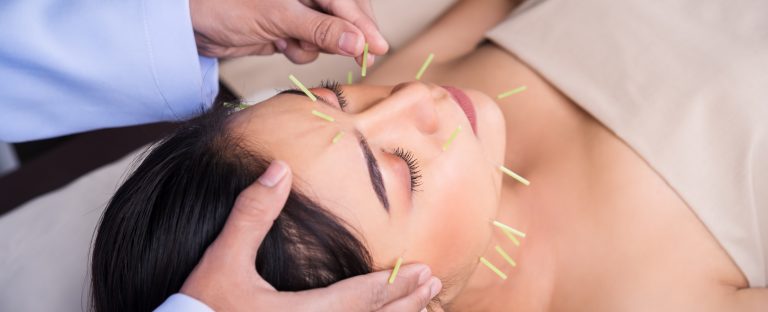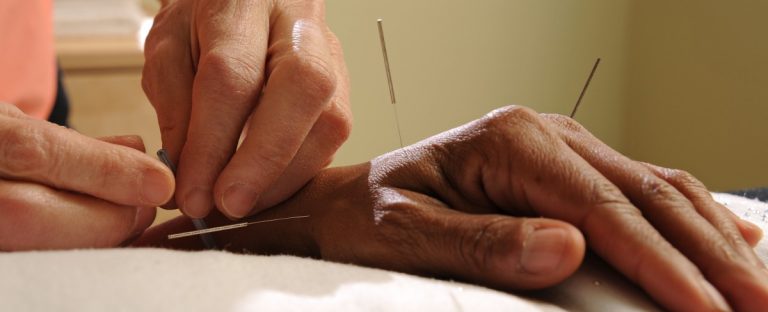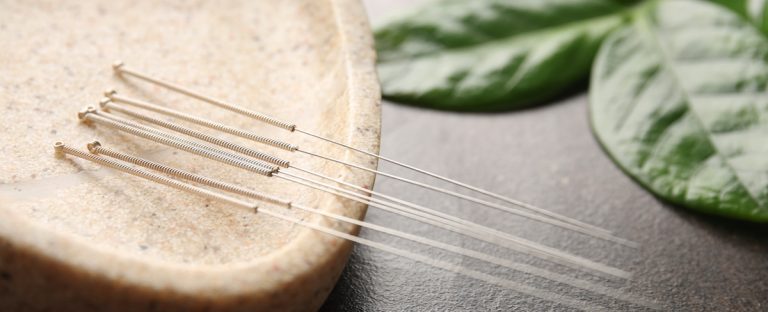Acupuncture has been around for thousands of years and has steadily gained popularity as a complementary and alternative medicine (CAM) for various health conditions. The World Health Organization (WHO) recognizes acupuncture as a safe and effective treatment for multiple conditions, including pain, infertility, and addiction. As we move into 2023, several trends in acupuncture are expected to become more prominent in the healthcare industry and here are the top 5 business trends in Acupuncture for 2023.
Integrative Care
One of the most significant trends in acupuncture is the integration of acupuncture into conventional healthcare. Many hospitals and clinics now offer acupuncture services as part of their treatment options, recognizing the benefits of incorporating CAM therapies into traditional healthcare and being covered by many healthcare plans. This trend is expected to continue into the new year, with more healthcare organizations recognizing the benefits of acupuncture and incorporating it into their treatment plans.
Acupuncture for Addiction
Acupuncture has been used for centuries to help with addiction, and this trend is expected to continue in the new year. Acupuncture is used in the treatment of addiction to alcohol, opioids, and tobacco. In 2023, we expect to see more practitioners specializing in addiction acupuncture to support those struggling with addiction.
Acupuncture for Mental Health
Acupuncture has long been recognized as an effective treatment for physical conditions, but it is also becoming increasingly popular for mental health conditions. Studies have shown that acupuncture can effectively treat anxiety, depression, and PTSD. As the role of patients’ mental health grows, we expect to see more practitioners specializing in mental health conditions.
Acupuncture for Pregnancy and Fertility
Acupuncture has been used for centuries to help with fertility and pregnancy. Studies have shown that acupuncture can increase the chances of conception and improve the chances of a healthy pregnancy. We forecast growth in practitioners specializing in fertility and pregnancy acupuncture as more couples turn to acupuncture as a natural and holistic approach to fertility and pregnancy.
Acupuncture for Pain Management
Acupuncture has long been used as a treatment for pain management. Acupuncture effectively treats chronic pain conditions such as fibromyalgia, migraines, and lower back pain. In 2023, we can expect more practitioners specializing in pain management using acupuncture to relieve patients suffering from chronic pain. However, insurance coverage for acupuncture will only expand meaningfully when the Center for Medicare and Medicaid Services expands its coverage to include licensed acupuncture physicians as eligible providers.
As a safe and effective alternative treatment, acupuncture will continue to grow in popularity. With an expanding body of research supporting the effectiveness of acupuncture, the practice will continue to gain recognition and acceptance as a valuable complementary and alternative medicine.
Did you know that the acupuncture industry in the United States is valued around $664 million? Approximately 3 million adults receive acupuncture treatment each year and that number continues to grow as more people turn to holistic healthcare and alternative medicines.
How can your acupuncture practice attract and retain clients in this growing market? Your marketing strategy is essential to your enduring success and sustainable growth as a holistic practice – acquiring new patients is as valuable as retaining current clients, and everyone benefits from an effective marketing strategy. However, this can be a challenging endeavor and you might be looking for some holistic practice marketing tips.
In this article, we’ll cover the budgeting basics of a marketing strategy and review best practices for some important marketing elements, such as your social media and website. Keep reading to learn more marketing tips!
How Much Should You Budget for Marketing Your Acupuncture Practice?
Before you do anything with your acupuncture practice, you probably ask yourself a variety of questions regarding cost: how much something will cost, how can you be sure it’s worth it, how much effort will it take you to execute, etc. are all valid questions to have. Marketing efforts are no exception, of course, and this is the foundation for any discussion about marketing tips.
If you’re looking to maintain the current size of your acupuncture practice, it’s recommended that you spend about 5% of your gross revenue on marketing. On the other hand, if you’re looking to expand and scale your practice, then you’d want to spend between 7% and 15% of your gross revenue.
For example, if your gross revenue is $5,000 per month then you should put aside $250 for marketing initiatives. Of course, marketing budgets can change over time and other factors come into play, so these numbers are all relative to your particular acupuncture practice and short- or long-term goals.
Holistic Marketing Tips #1: Calculate Your Customer’s Lifetime Value for Deeper Marketing Budgeting Insight
If you want to dive a little deeper into how much you should expect to budget for marketing your acupuncture practice, let’s talk about a customer’s lifetime value.
This metric, abbreviated to CLV, estimates the financial gains your practice earns from each patient and is the ace up your sleeve when it comes to marketing your practice. The formula is simple and can apply to almost any healthcare or service field:
Average Annual Value x Relationship Years + Patient Referral Value
= Customer Lifetime Value
For example, if you have a client who visits your acupuncture practice once a month and each visit costs $100, then the total revenue generated from that one client is $1,200 over the course of that year. Factor in a 20% profit margin and your Average Annual Value of that client is then $240.
Let’s say this same client continues to visit your practice for 5 years before moving to another state, then the CLV would calculate out to this:
AAV ($240) x Relationship (5 years) = $1,200
When you start consistently tracking this metric at your acupuncture practice, you can better leverage marketing tips and strategies that are appropriately budgeted in order to reduce costs and boost your profits. For example, if you know that an average CLV at your acupuncture practice is about $500, then you wouldn’t want to exceed that figure for your marketing budget.
After all, knowledge is power–when you know what to financially anticipate from a typical patient over the course of their relationship with your practice, you can make better informed decisions about how you engage with them via marketing.
Holistic Marketing Tips #2: Leverage Social Media Accounts to Create Community
If creating a social media account for your acupuncture practice seems frivolous or intimidating, we understand. However, if you have a business – in any industry – then it behooves you to tap into social media for marketing purposes and there are plenty of statistics to back it up:
- According to 90% of marketers, their social media marketing efforts have increased the exposure of their business, and 75% say they’ve increased traffic
- 71% of consumers who have had a good social media experience with a brand are likely to recommend it to others
- 74% of consumers share video content from brands on social media
- 80% of social marketers say their key strategy is to increase engagement across social channels
- There are more than 50 million small businesses using Facebook Pages to connect with customers
Don’t worry about trying to go viral or trying to fit into a niche that doesn’t feel authentic to you and your practice – instead, focus on putting out content that you care about and that reflects your acupuncture practice. For example, you could do a series where you briefly explain pressure points one at a time and how each one affects the body.
Or if you have a cat at your practice, you can make a video about a day in the life of an acupuncture practice cat. The content you produce for social media doesn’t have to be serious, it can be fun! There is magic in the mundane of your industry that people who aren’t in it might not know about, so don’t be afraid to try new ideas.
Social media is a great way to build rapport with your audience and further illustrate who you are and what your practice stands for so be sure to include it in your marketing strategy.
Holistic Marketing Tips #3: Update and Expand Your Practice’s Website
With so many free, easy-to-use, and customizable website resources on the internet, there’s no reason why your acupuncture practice doesn’t have a professional website. Potential clients can find your site when searching for acupuncturists in your area and existing clients can stay up to date on your practice so it’s a win-win. Plus, a nice website can help distinguish you from the competition!
In addition to ensuring that your site is optimized for mobile users, which is a feature in most DIY website building platforms, consider including the following on your acupuncture practice’s website:
- A section that outlines your background and the values that guide your practice
- Your mission statement
- Contact information, hours of operation, location details, and more
- A place for announcements or specials
- Social media links
- A blog where you demonstrate your expertise and interests through engaging articles
- Link to leave a review on Google and other rating sites
- And more!
Personalizing your site will help clients, both new and existing, learn more about you; building that relationship is critical to long-term success!
Holistic Marketing Tips #4: Partner with a Medical Billing Firm
Does the thought of coming up with creative social media content overwhelm you because who has the time? Are you already swamped with mountains of paperwork that hardly seem to go away even after you spend hours each week tackling it? Would you say that treating patients is the best part of your job, yet it seems that you spend the least amount of time with them?
If you answered yes to any of the above questions, then you should partner with a medical billing firm!
How does this relate to marketing your acupuncture practice? When your time is consumed by the tedious and complicated medical coding and billing process, it leaves little time for much else. By letting a trusted firm, like Holistic Billing Services, handle the medical billing burden, your time, energy, and creativity is freed up to focus more on what matters most: your patients.
The friendly experts at HBS have decades of experience and are eager to help you succeed! Contact us today to get started building a custom solution that suits your acupuncture practice needs and goals.
When it comes to expanding government coverage of holistic and complementary treatments, the task of getting everyone on board can be tedious and take years for legislative consideration.
Delivering substantial and comprehensive evidence of the benefits of holistic treatments, however, does help streamline the process and make a compelling case for incorporating integrative medicine into government programs and private insurance plans. Performing research and providing results that speak to how effective these treatments are for veterans and patients takes time and money, but is ultimately worth it for encouraging the inclusion of holistic treatments.
One such organization that performs research and reports on the results of various healthcare initiatives is the Quality Enhancement Research Initiative, known as QUERI, which operates under the umbrella of the Veterans Affairs department. This organization is instrumental in leveraging a vast network of researchers and investigators around the country to examine a multitude of healthcare actions.
In January 2014, QUERI presented an evidence map of acupuncture that analyzed the effects of acupuncture on mental health, wellness, and pain, plus elaborated on future research efforts and potential drawbacks to this treatment.
More than three years later, acupuncture was adopted into coverage for veterans as included in VHA Directive 1137, published in May 2017. Nearly a year after that Directive was announced, a Qualification Standard was published that permitted licensed acupuncturists to be hired to provide acupuncture care at VA Medical Centers (VAMC) in February 2018.
How did the VA come to the decision to promote acupuncture as part of their benefits for veterans? As with most bureaucratic processes, there were a lot of factors; one key player was QUERI’s evidence map of acupuncture. In this article, we’ll expand on QUERI’s research methods and some of the key takeaways from their report on the effects of acupuncture.
History of the Quality Enhancement Research Initiative for the VA
Founded in 1998 with the mission to “accelerate the use of research evidence, tools, and methods into routine care and ensure U.S. Military Veterans benefit from research discoveries,” QUERI plays a pivotal role in analyzing the effects of healthcare treatments with the ultimate goal of improving care quality and access for veterans.
Since its founding, QUERI has implemented numerous programs and leveraged partnerships to continue expanding care for veterans. Just a few notable examples in recent history include the following:
- National implementation with the VA Office of Mental Health and Suicide Prevention of the Behavioral Health Interdisciplinary Program of team-based care that reduced mental health hospitalizations for Veterans
- Launching several ongoing studies related to COVID, on topics ranging from racial and ethnic disparities in COVID-19 infection and complications to identifying Veterans’ experiences during the COVID-19 pandemic
- Improving Veterans’ experience and quality of virtual care options in VA and community care venues
QUERI’s Strategic Methodology
QUERI’s initiatives operate under a variety of frameworks or roadmaps depending on which facet of the organization you look at; regarding their overarching strategic methodology of operation, they employ a three-fold approach:
- Implement: Enhance Veteran access to cutting-edge, personalized treatments
- Evaluate: Develop mutually beneficial partnerships and inform the rollout of high-priority initiatives
- Disseminate & Sustain: Drive a culture of learning and knowledge translation across the VA as a whole
Pertaining to their research approaches, QUERI leverages a network of more than 200 investigators who have completed more than 500 peer-reviewed studies addressing VA priorities. This rigorous process ensures that research is performed and data is analyzed by those with a high degree of expertise and demonstrated dedication to improving care for veterans.

Key Takeaways From QUERI’s Evidence Map of Acupuncture
Now that we’ve established QUERI’s authority and importance in terms of gathering evidence for important healthcare initiatives for veterans, let’s review a few key takeaways from their evidence map of acupuncture:
Acupuncture Evidence for Pain
QUERI reports with high confidence that acupuncture has a positive impact—or potential positive impact—on several different ailments:
High confidence in the evidence of positive impact:
- Chronic pain
- Migraines
- Headaches
High confidence in the evidence of potential positive effects:
- Dysmenorrhea, also known as severe menstrual cramping
- Cancer pain
- Labor pain
There is also medium confidence in potential positive effects that acupuncture adequately treats pain related to osteoarthritis, pregnancy pain, Temporomandibular joint dysfunction (also known as TMJ), Plantar heel pain, prostatitis, and more.
Acupuncture Evidence for Mental Health
QUERI’s investigation found that acupuncture had the potential for a positive effect on the following mental health conditions:
- Depression
- Schizophrenia
- Anxiety
- PTSD
Acupuncture Evidence for Wellness
This evidence map of acupuncture found acupuncture had the potential for positive effects on a few ailments, including:
- Insomnia
- Smoking cessation
- Postoperative nausea and vomiting (PONV)
- Restless legs
But ultimately there was unclear evidence that acupuncture impacts the following ailments and conditions:
- Cancer AE
- IBS
- PMS
- Menopausal symptoms
- Overall quality of life
While there have been significant studies on the effectiveness of acupuncture in more recent years, understanding this fundamental acupuncture evidence map and its relation to providing coverage to veterans can give insight into the process of increasing coverage for holistic treatments.
Is your acupuncture practice ready to start treating the veterans in your community? Worried about how stressful the medical billing process can be—especially in terms of billing the VA for services rendered? Partner with a medical billing firm!
At Holistic Billing Services, we deal exclusively with holistic healthcare practices that deliver acupuncture, massage therapy, and chiropractic treatments to communities around the country. Whether you have questions on acupuncture insurance billing or other methods to enhance your revenue cycle management, feel free to contact our team today and let us know how we can help your acupuncture practice.
In recent years, there have been tremendous advances in legislation expanding the coverage that Medicare provides to millions of seniors around the country. In particular, expanding coverage to include holistic medicine has been most notable with the recognition—albeit limited recognition—of acupuncture services to treat chronic lower back pain which happened in early 2020. This relationship between Medicare and acupuncture is vital to providing the benefits of holistic treatment to millions of seniors!
About a year and a half later, in July 2021, another piece of legislation was introduced in the 117th Congress: legally classified as HR 4803, the Acupuncture for Seniors Act was written and sponsored by California Representative Judy Chu and would expand Medicare coverage of acupuncture in a few key manners.
Let’s dive into how this Act would impact acupuncture, both as a practice in its own right and in terms of your holistic practice.
HR 4803 Would Expand Medicare Coverage of Acupuncture
The Acupuncture for Seniors Act, known officially as HR 4803, would greatly impact the connection between Medicare and acupuncture by classifying licensed acupuncturists as Medicare providers who are qualified to provide services without supervision.
This kind of recognition from Medicare means that acupuncturists would be able to deliver care to more than 60 million Medicare beneficiaries. Plus, granting Medicare-provider status would streamline the medical billing process because acupuncturists would be able to bill Medicare directly instead of going through the physician-supervised requirement.
HR 4803 defines “qualified acupuncturists” as individuals who have state licensure or are certified by a nationally recognized authority, which helps providers who operate in states without a state license opportunity. Once again, this inclusive definition streamlines the patient-provider relationship and would make all licensed, certified acupuncturists able to serve Medicare patients.
Overall, the Acupuncture for Seniors Act would facilitate cost-effective and high-quality care to millions of people while encouraging the growth and development of acupuncture as a holistic practice and in communities around the country.
Current Status of Medicare and Acupuncture
The current status of Medicare and acupuncture is limited in comparison to what the Acupuncture for Seniors Act would do. At present, Medicare beneficiaries may be treated for chronic lower back pain, defined as:
- Lasting 12 weeks or longer;
- nonspecific, in that it has no identifiable systemic cause (i.e., not associated with metastatic, inflammatory, infectious, etc. disease);
- not associated with surgery; and
- not associated with pregnancy
Medicare will cover up to 12 visits in a 90 day period; if the patient demonstrates improvement, then Medicare will cover an additional 8 visits but treatment is not to exceed 20 treatments in an annual period.
CMS clarifies that “physicians, physician assistants, nurse practitioners/clinical nurse specialists, and auxiliary personnel may furnish acupuncture if they meet all applicable state requirements and have:
- A master or doctoral-level degree in acupuncture or Oriental Medicine from a school accredited by the Accreditation Commission on Acupuncture and Oriental Medicine (ACAOM); and
- current, full, active, and unrestricted license to practice acupuncture in a State, Territory, or Commonwealth (i.e. Puerto Rico) of the United States, or District of Columbia.”
In comparison, HR 4803 would significantly broaden the scope of care and the definition of who can provide acupuncture treatments—a huge win for Medicare and acupuncture!
How This New Bill Would Impact Your Acupuncture Practice
The Acupuncture for Seniors Act would tremendously benefit your acupuncture practice because you’d be able to treat patients with Medicare without the need for physician supervision—plus you’d be able to bill Medicare directly for these treatments.
This means that you can grow your practice to treat a whole population of people with a specific type of coverage that otherwise would have had to pay out of pocket for acupuncture treatments. And the ability to bill Medicare directly for these treatments translates to a streamlined revenue cycle management process for your practice!
Furthermore, this expansion of acupuncture services to be covered under Medicare validates and amplifies your efforts to deliver great care to the members of your community with a non-opioid, non-invasive treatment for pain. Perhaps this is the most important point of it all: providing holistic care that can radically improve patients’ quality of life and effectively function as a prescription alternative.
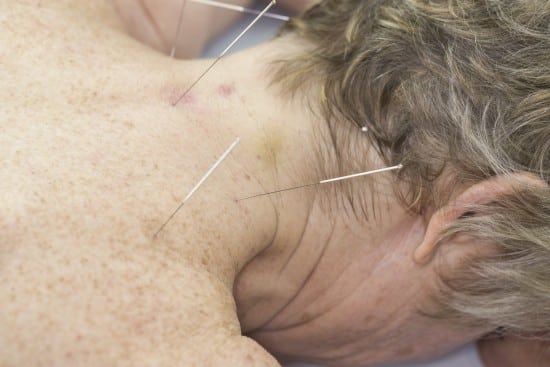
Proven Benefits of Acupuncture Treatments
Acupuncture provides a whole host of benefits, including:
Effective Pain Management
Acupuncture has been recognized for its effectiveness in treating pain, both chronic and acute. In fact, according to the National Institute of Health (NIH), several studies have found that such holistic treatments were proven to reduce pain for a variety of conditions and even manage constant pain such as low-back pain, neck pain, and osteoarthritis/knee pain.
Furthermore, in 2017, the American College of Physicians issued recommendations for treating patients who live with enduring lower back pain, including acupuncture as a proven drug-free treatment plan.
Proven Alternative to Opioid Drug Usage
As providers strive to reduce prescribing opioid drugs to manage pain, patients are directed to therapies like acupuncture as a holistic alternative that maintains an effective pain management quality. This is vital because a recent survey reveals that 49% of people reported knowing someone who has been addicted to prescription opioids; in other words, opioids are not to be taken lightly.
General Health and Wellness Benefits
While the NCCIH notes that acupuncture treatments have been proven to help treat lower back pain, neck pain, osteoarthritis, knee pain, and chronic migraines, the Acupuncture Evidence Project reviewed the effectiveness of acupuncture for 122 treatments over 14 clinical areas and have found some evidence of effect for 117 conditions. These include:
- High or low blood pressure
- Chemotherapy side effects and symptoms associated with it
- Facial pain, including dental pain
Optimize Your Acupuncture Practice’s Revenue Cycle with Holistic Billing Services!
Medicare’s expansion to include acupuncture would provide a huge benefit to your acupuncture practice and could bring in a whole new group of potential patients; how exciting! Want to optimize your practice’s revenue cycle? Partner with an expert medical billing firm!
At Holistic Billing Services, we deal exclusively with holistic healthcare practices that deliver acupuncture, massage therapy, and chiropractic treatments to communities around the country. Whether you have questions on acupuncture insurance billing or other methods to enhance your revenue cycle management, feel free to contact our team today and let us know how we can help your acupuncture practice.
More than 10 million acupuncture treatments are administered annually in the United States – and the number continues to grow! Its rise in popularity has made it one of the most utilized forms of integrative-medicine in the country. The advantages of acupuncture extend from acute pain relief to a safe and effective alternative to opioid medications.
As more scientific studies are proving the efficacy of acupuncture treatments, it’s no doubt that this holistic therapy will continue to expand and become an even more accepted medical method for pain management.
What is Acupuncture?
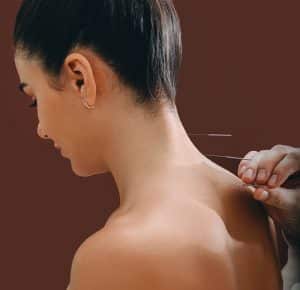
A key feature of traditional Chinese medicine, acupuncture treatment involves the insertion of very thin needles through a patient’s skin at strategic points along the body, in various depths. Due to their small size, the needles do not bring any discomfort but can provide relief by interrupting pain signals throughout the body.
While acupuncture has been traditionally used to treat discomfort from a wide variety of diseases and conditions, it is increasingly used as a remedy for stress management and overall wellness.
The opioid crisis is one of the major health challenges in the United States today, and it’s responsible for destroying thousands of lives. Whether addiction stems from prescription medications or illegal street drugs, more than two million Americans are victims of opioid misuse.
Finding alternatives to highly addictive opioid drugs is a crucial key to combating this epidemic. Increasingly, holistic practices have been looked at as safer and more effective alternatives to opioids. Acupuncture treatments, among other drug-free therapies, offer pain management solutions with minimal burden to patients, opening up a wide variety of opportunities for people to seek pain relief without the side effects of opioid drugs.
Understanding the Opioid Crisis
 The United States is in what’s currently being described as the “Opioid Crisis.” Up to 130 people die every day in the United States from opioid overdoses. The misuse of opioids, ranging from heroin, prescription pain relievers, and synthetics such as fentanyl, has become a severe burden on social and economic welfare, as well as a public health crisis. The Centers for Disease Control and Prevention estimate that the epidemic costs the United States $78.5 billion a year, including treatment costs, law enforcement, healthcare, and lost productivity.
The United States is in what’s currently being described as the “Opioid Crisis.” Up to 130 people die every day in the United States from opioid overdoses. The misuse of opioids, ranging from heroin, prescription pain relievers, and synthetics such as fentanyl, has become a severe burden on social and economic welfare, as well as a public health crisis. The Centers for Disease Control and Prevention estimate that the epidemic costs the United States $78.5 billion a year, including treatment costs, law enforcement, healthcare, and lost productivity.
The crisis has its roots in the late 1990s when pharmaceutical companies reassured doctors that opioid pain relievers were safe and addiction-free, leaving healthcare providers to prescribe them in great numbers to patients who complained of pain. The massive influx of prescription drugs has led to many patients becoming addicted, despite never touching illegal drugs. This led to the mass availability of heroin and synthetics, such as fentanyl, on the illegal market, allowing for the current widespread abuse of opioids in the country.
By the late 2010s, the crisis had reached emergency proportions. On October 26, 2017, the United States officially declared the opioid crisis as a National Public Health Emergency and the federal government began necessary taking steps to address the epidemic. The United States Department of Health and Human Services’ Five-Point Opioid Strategy was released in April 2017 as a framework for the federal response to the epidemic. The strategy partially aims to,
“Support cutting-edge research that advances our understanding of pain and addiction, leading to the development of new treatments, and identifies public health interventions to reduce opioid-related health harms…”
This is key for developing pain treatments that are alternatives to opioid drugs. Many have recognized the importance of holistic medicine, especially acupuncture treatments as alternative methods of pain management.
Holistic Alternatives to Opioid Drugs
The options of other pain management methods over opioid drugs have increased with the crisis’s severity. Popular alternatives for pain medications range from over-the-counter drugs, such as acetaminophen (Tylenol), to non-drug therapies that are used in conjunction with non-addictive medications. These include:
Physical Therapy
Physical therapy has been widely seen as a successful alternative to opioid drugs. Physical medicine and rehabilitation include options such as deep-muscle and ultrasound massages, whirlpools, as well as traditional physical therapy exercise programs that can prevent and manage pain from injuries or disabilities.
Yoga
This meditative movement practice has surged in popularity over the years and can not only improve fitness and reduce stress, but has been found to especially reduce discomfort in people with lower back pain. It also features mind-body techniques, including breathing exercises that can help induce relaxation and lower anxiety.
Acupuncture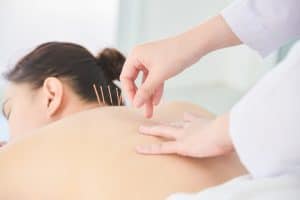
This increasingly popular ancient Chinese practice uses fine needles inserted in various “acupuncture points” across the body to treat pain. Since the needles are so small, they themselves do not inflict pain but can provide significant pain relief for those with regular appointments by interrupting pain signals throughout the body.
Is Acupuncture an Effective Opioid Drug Alternative?
Acupuncture is an effective pain management alternative to opioid drugs and is at the forefront of some of the more touted holistic alternatives to pain issues. When performed by licensed acupuncturists, acupuncture is a safe and powerful modality for pain management for a variety of injuries and disabilities without the destructive side effects of opioid drugs.
One meta-analysis of almost 18,000 patients across 29 randomized controlled trials found that certified, accurate acupuncture was significantly more effective than the absence of the service.
It’s becoming increasingly accepted that acupuncture could be prioritized as a replacement for opioid drugs for both chronic and acute pain. Despite their effectiveness, acupuncture treatments are minimally invasive so they cause minimal burden to patients with no lasting side effects.
What Does Acupuncture Treat?
Acupuncture treatments can be used to treat a wide range of symptoms, including stress management, pain control, and neurological and respiratory disorders. When used as an opioid drug alternative, acupuncture treatments can be manifested as either treatment for pain management or as an opioid replacement.
Acupuncture for Pain Relief
Acupuncture treatments have been increasingly known as the “go-to” for integrative therapy for its effectiveness on pain relief. According to the National Institute of Health (NIH), results from a number of studies have found that acupuncture treatments reduce pain for a number of ailments, including types of pain that are often chronic such as low-back pain, neck pain, and osteoarthritis/knee pain.
Additionally, the side effects are minimal when compared to other pain management solutions. Relatively few complications from acupuncture have been reported when it’s administered correctly. In 2017, the American College of Physicians issued recommendations for treating chronic lower back pain, including acupuncture as an effective non-drug therapy. As providers try to limit prescribing opioid drugs as pain management options, effective and as safe therapies such as acupuncture treatments are increasingly pushed to the forefront of pain control methods.
Acupuncture as an Opioid Drug Alternative
Acupuncture has the potential to become a front-line treatment for pain management, reducing the number of opioid drug prescriptions being issued. As an opioid drug alternative, acupuncture treatments can be used in place of the prescriptions for acute to chronic pain for the same effects with only minimal burden on the patient.
A Cochrane study of five randomized trials and 285 patients found benefits of acupuncture for cancer pain relief when compared to traditional pain medications, which are often opioid drugs. Additionally, some studies suggest that acupuncture activities opioid receptors in the brain. When used in conjunction with acupuncture treatments, this would likely allow for lower doses of opioid medication to be needed for patients with severe pain.
What are the Health Benefits of Acupuncture?
The health benefits of acupuncture treatments are numerous and can be used to treat a wide variety of medical conditions and symptoms. Besides its benefits as an opioid drug alternative, acupuncture can be used to treat everything from migraines and headaches to recovery from surgery.
While the NCCIH notes that acupuncture treatments have been proven to help treat lower back pain, neck pain, osteoarthritis, knee pain, and chronic migraines, the Acupuncture Evidence Project reviewed the effectiveness of acupuncture for 122 treatments over 14 clinical areas and have found some evidence of effect for 117 conditions.
Other conditions that acupuncture treatments can relieve pain for include:

- High and low blood pressure
- Chemotherapy-induced nausea and vomiting
- Facial pain
- Morning sickness
- Dental pain
- Inducing labor
Additionally, one of the more attractive benefits of acupuncture is that there are minimal side effects when compared to medication drugs, such as opioids. It’s a safe and non-addictive method for those looking for a minimally invasive pain solution.
Let HBS Handle Your Billing for Acupuncture Services so You Can Focus on Delivering Better Patient Care!
As the acupuncture service industry expands, you want to focus on growing your holistic practice and ensuring that your patients are receiving the best in acupuncture treatments. Billing for acupuncture services can be tedious, but it doesn’t have to be.
Holistic Billing Services specializes in the unique requirements of acupuncture practices to ensure that they get the insurance reimbursements they’re entitled to receive for their services. By partnering with an experienced medical billing team, you can spend less time thinking about managing the ins and outs of CPT coding and insurance claims and more time delivering higher-quality care to your current patients.
Ready to accelerate your practice’s revenue cycle management and grow your acupuncture practice? Contact our billing and coding experts today.

